DEEP DOWN, CANCER ALLEY
 Stacy Kranitz, Untitled,
Lake Charles, Louisiana, 2016
Stacy Kranitz, Untitled,
Lake Charles, Louisiana, 2016
Romke Hoogwaerts You've been documenting stories in Louisiana for quite some time. What keeps pulling you back?
Stacy Kranitz It is where I first began to make work. I first spent time there between 2005 and 2008 documenting the final days of Legal cockfighting, I was interested in the idea of violence as catharsis and while I was there I fell in love with a Cajun cockfighter and became enamored with the swampy terrain of southwestern Louisiana. This was the first time I began to build personal relationships in my work. I became interested in erasing this division because I felt it inhibited the work I was making.
Next, I began spending time with a family on an island that is sinking into the gulf. I would stay with the Chaisson’s — Hilton, his two wives Sue and Judy, some of their twelve children and many grandchildren. From the moment I arrive, I am the butt of their jokes. One minute someone is farting in my face, the next minute someone is trying to marry me off to an eligible cousin, uncle or brother. The way that I am taken in and lovingly tormented helps to even the playing field of our power dynamic. This was the turning point in my work and opened me up to ways that I could further dissolve the walls between my professional and personal life. The Chaisson’s demanded this of me. I could not stay in their home unless I was willing to erase these barriers. For me, these complex and complicated relationships force photography into telling a more genuine story.
Romke Is this a new chapter in that narrative from Louisiana, or is it a separate story?
Stacy This is a new chapter and separate story. I will be telling stories and adding chapters to my work in Louisiana for a lifetime. I’m not sure I even have a choice in this matter, I just keep returning and making new work here without really knowing what I am doing.
Last year I spent a lot of time along River Road in Cancer Alley and became fascinated by the legacy of slavery. I was interested in the transition from sugar cane fields to petro-chemical plants and how there were small communities founded by freed slaves that were not cared for and being taken advantage of by the government.
Stacy Kranitz It is where I first began to make work. I first spent time there between 2005 and 2008 documenting the final days of Legal cockfighting, I was interested in the idea of violence as catharsis and while I was there I fell in love with a Cajun cockfighter and became enamored with the swampy terrain of southwestern Louisiana. This was the first time I began to build personal relationships in my work. I became interested in erasing this division because I felt it inhibited the work I was making.
Next, I began spending time with a family on an island that is sinking into the gulf. I would stay with the Chaisson’s — Hilton, his two wives Sue and Judy, some of their twelve children and many grandchildren. From the moment I arrive, I am the butt of their jokes. One minute someone is farting in my face, the next minute someone is trying to marry me off to an eligible cousin, uncle or brother. The way that I am taken in and lovingly tormented helps to even the playing field of our power dynamic. This was the turning point in my work and opened me up to ways that I could further dissolve the walls between my professional and personal life. The Chaisson’s demanded this of me. I could not stay in their home unless I was willing to erase these barriers. For me, these complex and complicated relationships force photography into telling a more genuine story.
Romke Is this a new chapter in that narrative from Louisiana, or is it a separate story?
Stacy This is a new chapter and separate story. I will be telling stories and adding chapters to my work in Louisiana for a lifetime. I’m not sure I even have a choice in this matter, I just keep returning and making new work here without really knowing what I am doing.
Last year I spent a lot of time along River Road in Cancer Alley and became fascinated by the legacy of slavery. I was interested in the transition from sugar cane fields to petro-chemical plants and how there were small communities founded by freed slaves that were not cared for and being taken advantage of by the government.

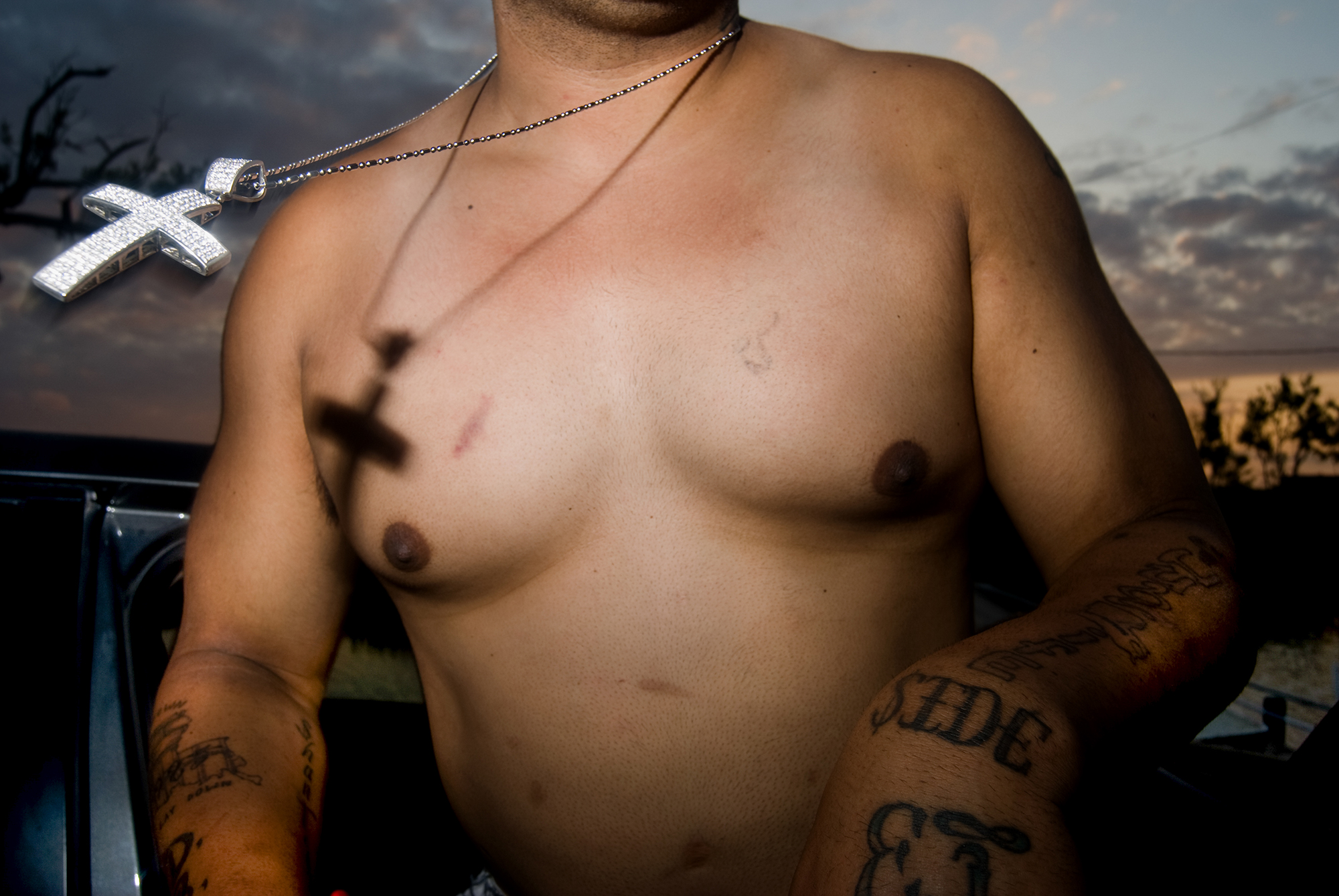



Stacy Kranitz (from top, all untitled):
Isle De Jean Charles, Louisiana, 2009;
Grand Chenier, Louisiana 2016;
Baton Rouge, Louisiana, 2017;
Donaldsonville, Louisiana, 2016;
Idle de Jean Charles, Louisiana, 2010
Romke Can you tell me a little more about how environmental racism functions? It's something that I'm still learning about. I take it that this means that predominantly Black neighborhoods getting the brunt of the negative effects of industrial pollution?
Stacy It is a pattern of dumping, toxic sewage, chemical spills, petro-chemical plants oil refineries in low income minority neighborhoods. The history of America is wrapped up in this pattern and Louisiana plays a provocative role because many freetown bureau communities have been swept up in it, tying environmental racism directly to the failure of reparations after the civil war.
There is also a relationship to disenfranchised white communities in Appalachia that have had their water streams polluted by the coal industry.
Stacy It is a pattern of dumping, toxic sewage, chemical spills, petro-chemical plants oil refineries in low income minority neighborhoods. The history of America is wrapped up in this pattern and Louisiana plays a provocative role because many freetown bureau communities have been swept up in it, tying environmental racism directly to the failure of reparations after the civil war.
There is also a relationship to disenfranchised white communities in Appalachia that have had their water streams polluted by the coal industry.
Romke The EPA's being gutted. Has that news affected the mood in Cancer Alley?
Stacy In the communities, I am spending time in, we are talking about a deep disenfranchisement with the government, lawyers, the media and non-profit environmental organizations. These communities have fought and fought for more than forty years to combat mega-corporations dumping and releasing toxic pollutants in their communities and homes. The level of disillusionment is so strong that dissolution of EPA regulations mean little to nothing. Many of the communities I am spending time in, have never seen the government provide fair resources or defend their rights to breathe clean air and drink clean water.
Stacy In the communities, I am spending time in, we are talking about a deep disenfranchisement with the government, lawyers, the media and non-profit environmental organizations. These communities have fought and fought for more than forty years to combat mega-corporations dumping and releasing toxic pollutants in their communities and homes. The level of disillusionment is so strong that dissolution of EPA regulations mean little to nothing. Many of the communities I am spending time in, have never seen the government provide fair resources or defend their rights to breathe clean air and drink clean water.
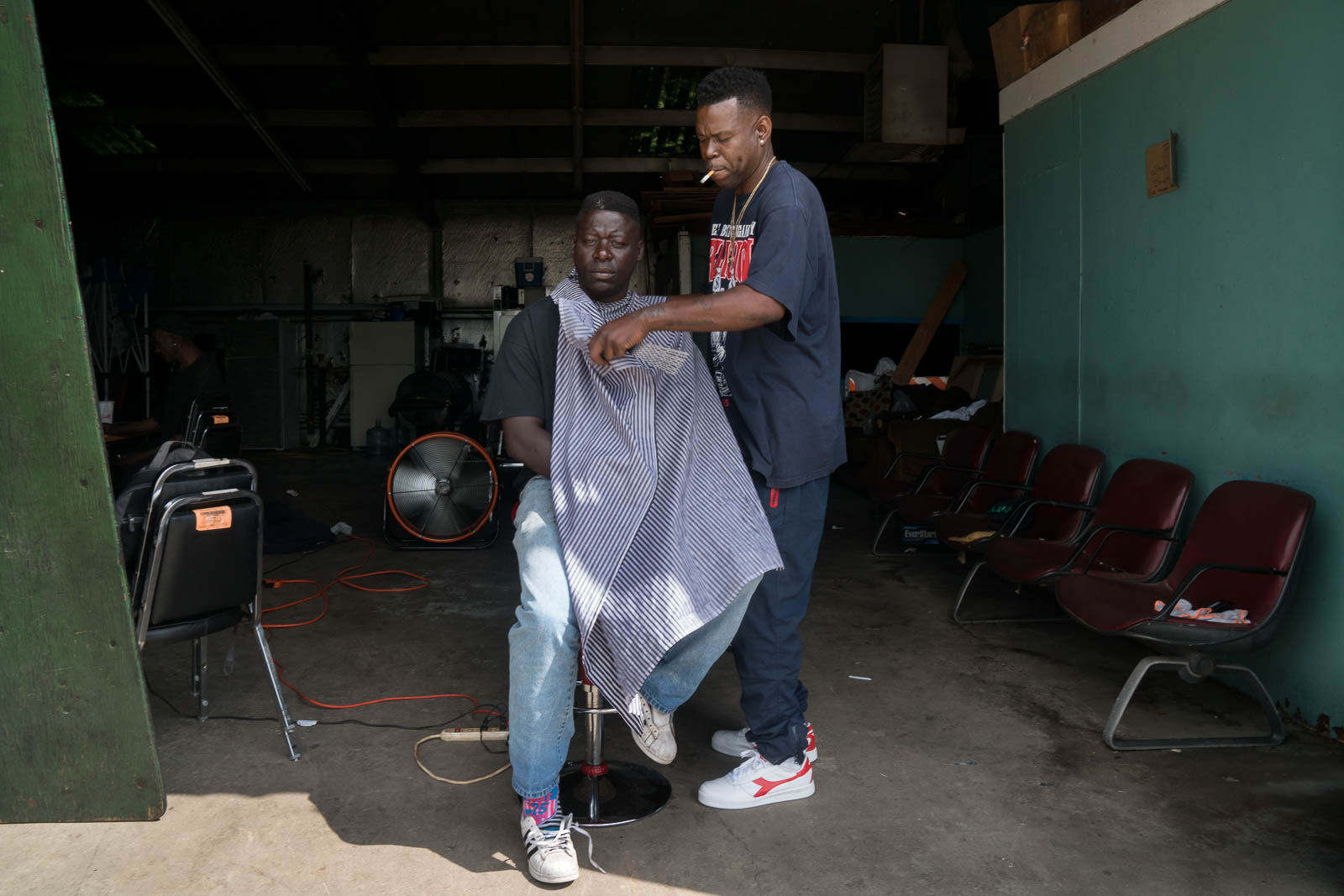 Stacy Kranitz,
Baton Rouge, Louisiana, 2017
Stacy Kranitz,
Baton Rouge, Louisiana, 2017
Romke How are you approaching that concept photographically? What are you seeing that's translating the situation most effectively in pictures?
Stacy I recently spent 6 months on assignment attempting to offer a deeply felt portrait of Trump supporters andisenfranchised voters for clients like Bloomberg Businessweek, Harper’s, New Republic, Mother Jones and Time. The whole endeavor felt like a failure. The liberal media was never able to pull itself outside of the liberal bubble and even the very best most nuanced pieces could not bridge the divide.
While I was focused on white disenfranchisement, I realized the racial divide was being and would continue to be ignored while we are all caught up in reconciling with the Trump presidency.
But really, I don’t know how I got here because I have always disliked work where white photographers go into Black communities and inevitably fetishize the other under the guise of illuminating a social issue without directly addressing or acknowledging the power dynamic, othering and fetishization within the work. In an era where communities can represent themselves and photographic tools are more and more accessible to everyone with a smartphone what can a well-educated white documentary photographer offer a disenfranchised community, should she offer anything. These are questions that I ask when I looked at substantial projects from white artists about African American communities.
Stacy I recently spent 6 months on assignment attempting to offer a deeply felt portrait of Trump supporters andisenfranchised voters for clients like Bloomberg Businessweek, Harper’s, New Republic, Mother Jones and Time. The whole endeavor felt like a failure. The liberal media was never able to pull itself outside of the liberal bubble and even the very best most nuanced pieces could not bridge the divide.
While I was focused on white disenfranchisement, I realized the racial divide was being and would continue to be ignored while we are all caught up in reconciling with the Trump presidency.
But really, I don’t know how I got here because I have always disliked work where white photographers go into Black communities and inevitably fetishize the other under the guise of illuminating a social issue without directly addressing or acknowledging the power dynamic, othering and fetishization within the work. In an era where communities can represent themselves and photographic tools are more and more accessible to everyone with a smartphone what can a well-educated white documentary photographer offer a disenfranchised community, should she offer anything. These are questions that I ask when I looked at substantial projects from white artists about African American communities.
 Stacy Kranitz,
Baton Rouge, Louisiana, 2017
Stacy Kranitz,
Baton Rouge, Louisiana, 2017
But here I am in Louisiana behaving like a white savior with the best of them. I thought I had long ago eschewed the idea of photojournalism and the fantasy of making work that would illuminate an injustice and assert a right and wrong on behalf of a community but somehow, I lost my way and began to do the very thing I did not believe in or respect.
My first few weeks in Louisiana I could not stand myself or the images I was making but I also could not stop because the story was so much more powerful and absurd and layered than I had imagined it.
The community of Alsen was established in 1872 by the Freedman’s Bureau (a program founded by Congress to help former Black slaves and poor whites in the South during the aftermath of the Civil War.) In the 1950’s, the Baton Rouge city parish council voted to rezone the land around Alsen from Agriculture to Industry. The re-zoning faced little opposition because there were very few registered voters of color in Baton Rouge at the time and no elected officials of color in the parish. Now there are 11 petrochemical plants, a lead smelter, coke ovens, three Superfund sites, a commercial hazardous waste incinerator, numerous hazardous waste landfills, and city garbage dumps surrounding the communities of Alsen and St Irmalee. The residents suffer from respiratory problems, including asthma, difficulty breathing rashes and spontaneous nosebleeds.
In 1987, the community was the first of any to fight back against a corporation. They were held up as the community that founded the environmental racism movement but 30 years later they are still surrounded by an extreme level of pollution from neighboring plants and then about six years ago a massive landfill opened in the middle of the community. Mountains of rotting debris have caused the whole town to stink and has further contaminated the air, water and soil. So, I began to spend more and more time in the community at a church in Alsen and going door to door to visit with residents in St. Irmalee on the other side of the dump.
The community of Alsen was established in 1872 by the Freedman’s Bureau (a program founded by Congress to help former Black slaves and poor whites in the South during the aftermath of the Civil War.) In the 1950’s, the Baton Rouge city parish council voted to rezone the land around Alsen from Agriculture to Industry. The re-zoning faced little opposition because there were very few registered voters of color in Baton Rouge at the time and no elected officials of color in the parish. Now there are 11 petrochemical plants, a lead smelter, coke ovens, three Superfund sites, a commercial hazardous waste incinerator, numerous hazardous waste landfills, and city garbage dumps surrounding the communities of Alsen and St Irmalee. The residents suffer from respiratory problems, including asthma, difficulty breathing rashes and spontaneous nosebleeds.
In 1987, the community was the first of any to fight back against a corporation. They were held up as the community that founded the environmental racism movement but 30 years later they are still surrounded by an extreme level of pollution from neighboring plants and then about six years ago a massive landfill opened in the middle of the community. Mountains of rotting debris have caused the whole town to stink and has further contaminated the air, water and soil. So, I began to spend more and more time in the community at a church in Alsen and going door to door to visit with residents in St. Irmalee on the other side of the dump.
I started by naively trying to convince the neighborhood to rise up with me but I had no idea what the fuck I was doing. And when I reached out to local non-profits with years and years of organizing experience they belittled me for my lack of knowledge and refused to help. I felt hopeless and fucked because it became so clear that none of the options were ideal, the lawyers who have the power and resources to fight the corporations inevitably fail because they can only take on winnable cases and often only a select number of residents benefit if they succeed, the non-profits are territorial, fatigued with burn out and tied to the agenda of their biggest donors. The media occasionally presents the narrative of environmental racism to a mass audience but they can only afford to pay photographers and writers to spend a handful of days investigating the issue so the narrative exists on the surface and then there is the audience's ability to give a shit about the issue for a select five minutes before they have moved on to some other deeply fucked cause.
Oh and fuck art and its ability to illuminate injustice, the art world even in its most earnest form “social practice” is crooked and fucked as any and all of the other options.
One of my only attributes is that I find creative inspiration in deeply nihilistic spaces so instead of giving up, I chose to dig deeply into the fucked-up-ness of it all.
First, I took up a love affair with a lawyer working on an environmental racism case in a neighboring community also in North Baton Rouge. I forced him into late night conversation where I attacked the role of the lawyer and the journalist in the communities we were working. This allowed me to work through some of my deepest frustrations with the work.
Oh and fuck art and its ability to illuminate injustice, the art world even in its most earnest form “social practice” is crooked and fucked as any and all of the other options.
One of my only attributes is that I find creative inspiration in deeply nihilistic spaces so instead of giving up, I chose to dig deeply into the fucked-up-ness of it all.
First, I took up a love affair with a lawyer working on an environmental racism case in a neighboring community also in North Baton Rouge. I forced him into late night conversation where I attacked the role of the lawyer and the journalist in the communities we were working. This allowed me to work through some of my deepest frustrations with the work.
He is spending 11 hours a day in depositions listening to residents tell corporate lawyers how growing up next to a petro-chemical plant has affecting their lives and I am out trespassing on petro-chemical plant property and spending time with families learning about how complicated and entrenched the history of environmental racism is. We meet up late at night, I pummel him with a dark nihilistic logic about how the corporation he is battling will end up paying a settlement to a small number of residents but the money will not cause any real systemic change to take place.
Eventually I came to understand that there is value in documentation beyond, art, journalism and lawsuits. I realized that maybe it was time to let go of seeking out finite and clear solutions. I decided to work with the community to create a history of what has happened and that history could be useful as: a journalistic piece, it could help a lawyer determine if there is a lawsuit to take on and fight on behalf of the community or it could allow a community who has only been showed that they don’t matter or mean anything, that they do, that their history is unique and special and important to someone, me. As it turns out this is all I am capable of, anything would be misleading or an empty promise.
This community does not need another white person coming in with empty promises. I accepted that there is value in the gesture of listening to people without any solution oriented agenda. That all I have in the face of this, is a passion for documentation and the equipment and skills to produce an inclusive community document.
Eventually I came to understand that there is value in documentation beyond, art, journalism and lawsuits. I realized that maybe it was time to let go of seeking out finite and clear solutions. I decided to work with the community to create a history of what has happened and that history could be useful as: a journalistic piece, it could help a lawyer determine if there is a lawsuit to take on and fight on behalf of the community or it could allow a community who has only been showed that they don’t matter or mean anything, that they do, that their history is unique and special and important to someone, me. As it turns out this is all I am capable of, anything would be misleading or an empty promise.
This community does not need another white person coming in with empty promises. I accepted that there is value in the gesture of listening to people without any solution oriented agenda. That all I have in the face of this, is a passion for documentation and the equipment and skills to produce an inclusive community document.
The document will include oral histories, photographs, smell reports (where residents will document the days that the dump smells and how it physically affects them) We will commission water, air and soil tests because even if it does not change anything, the community has a right to know if there are damaging pollutants that are contributing to health issues. Even if they don’t get any money and the government refuses to close the landfill and continues to let petro-chemical plants build new facilities surrounding them without any consideration for how it affects the families living there, the community itself will have a record of the damage.
In the process, I am learning a lot about how a community comes to feel so disenfranchised that they cannot trust lawyers, artists, journalist’s non-profits or the media to help alleviate their suffering. I am learning how companies come in and break apart the connectedness of a community rising up by offering money to a select few families which results in breaking down the trust that neighbors have built through the process of coming together to rise up.
I also believe there is value in my subjective role in all of this. So, I am trying to build into the work a self-reflexive narrative about my own shortcomings, when and how I become complicit in the problem and when and how I do not. Hopefully somewhere along the way a visual strategy will come forth but if that does not happen, I accept that.
In the process, I am learning a lot about how a community comes to feel so disenfranchised that they cannot trust lawyers, artists, journalist’s non-profits or the media to help alleviate their suffering. I am learning how companies come in and break apart the connectedness of a community rising up by offering money to a select few families which results in breaking down the trust that neighbors have built through the process of coming together to rise up.
I also believe there is value in my subjective role in all of this. So, I am trying to build into the work a self-reflexive narrative about my own shortcomings, when and how I become complicit in the problem and when and how I do not. Hopefully somewhere along the way a visual strategy will come forth but if that does not happen, I accept that.
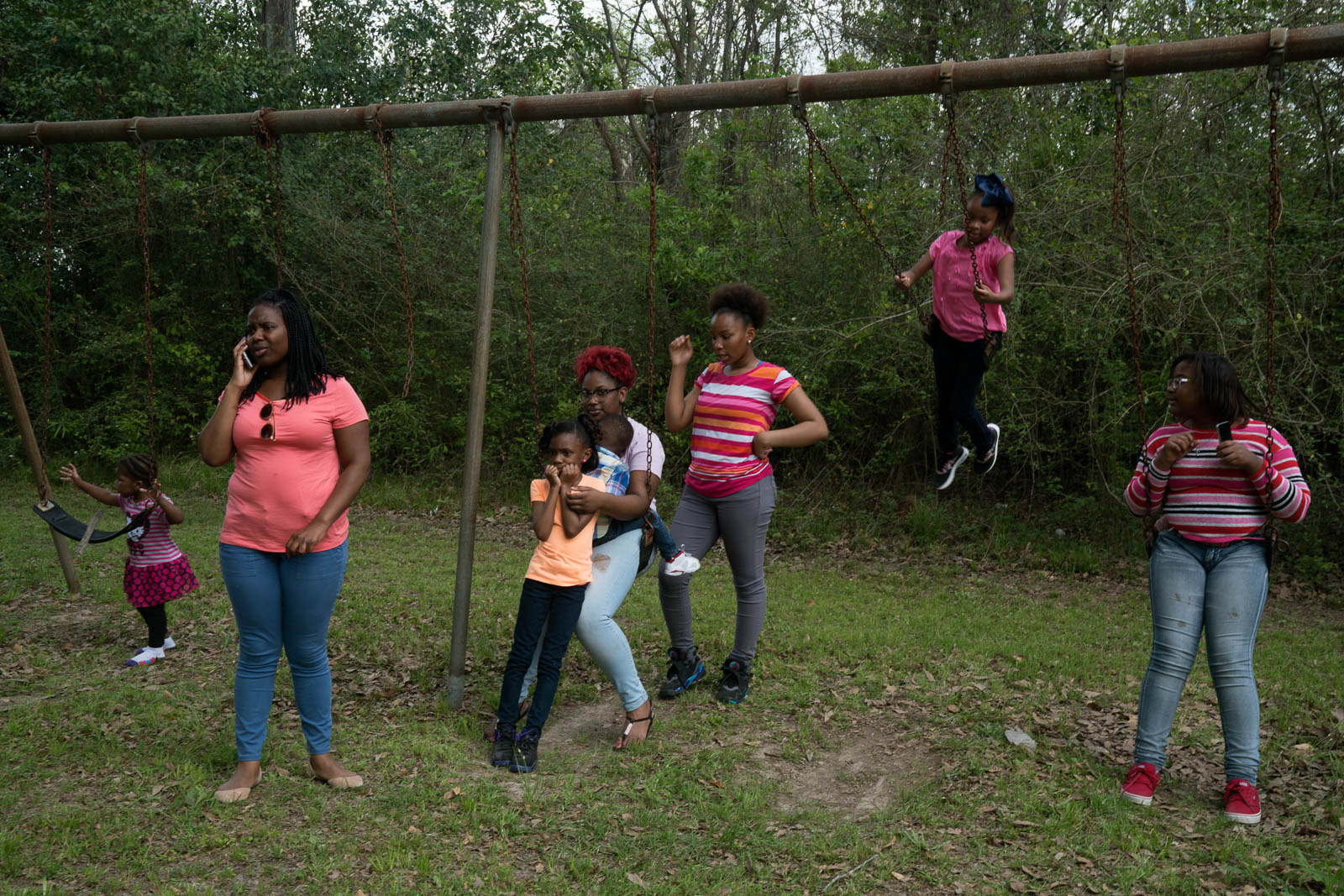 Stacy Kranitz,
Baton Rouge, Louisiana, 2017
Stacy Kranitz,
Baton Rouge, Louisiana, 2017

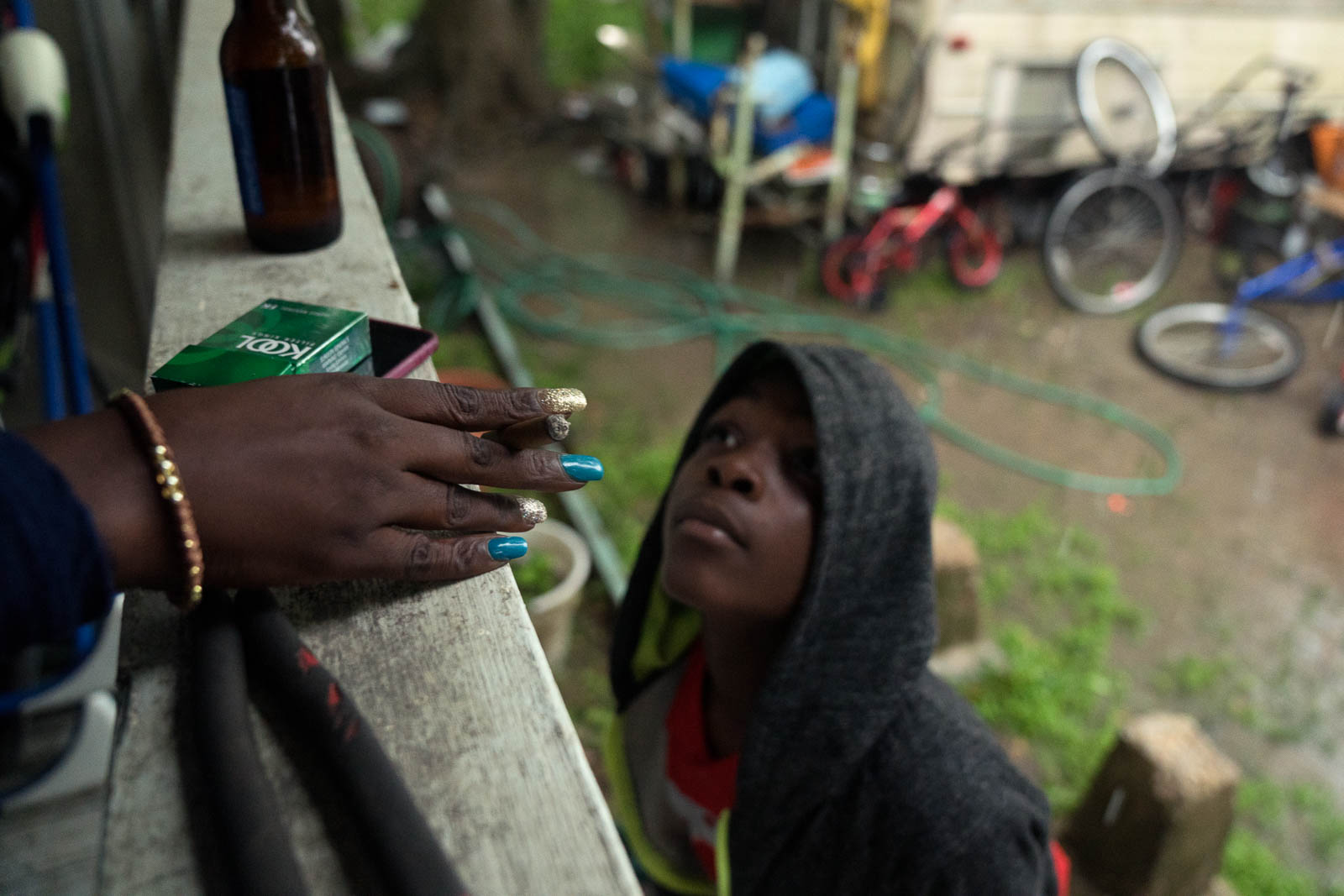


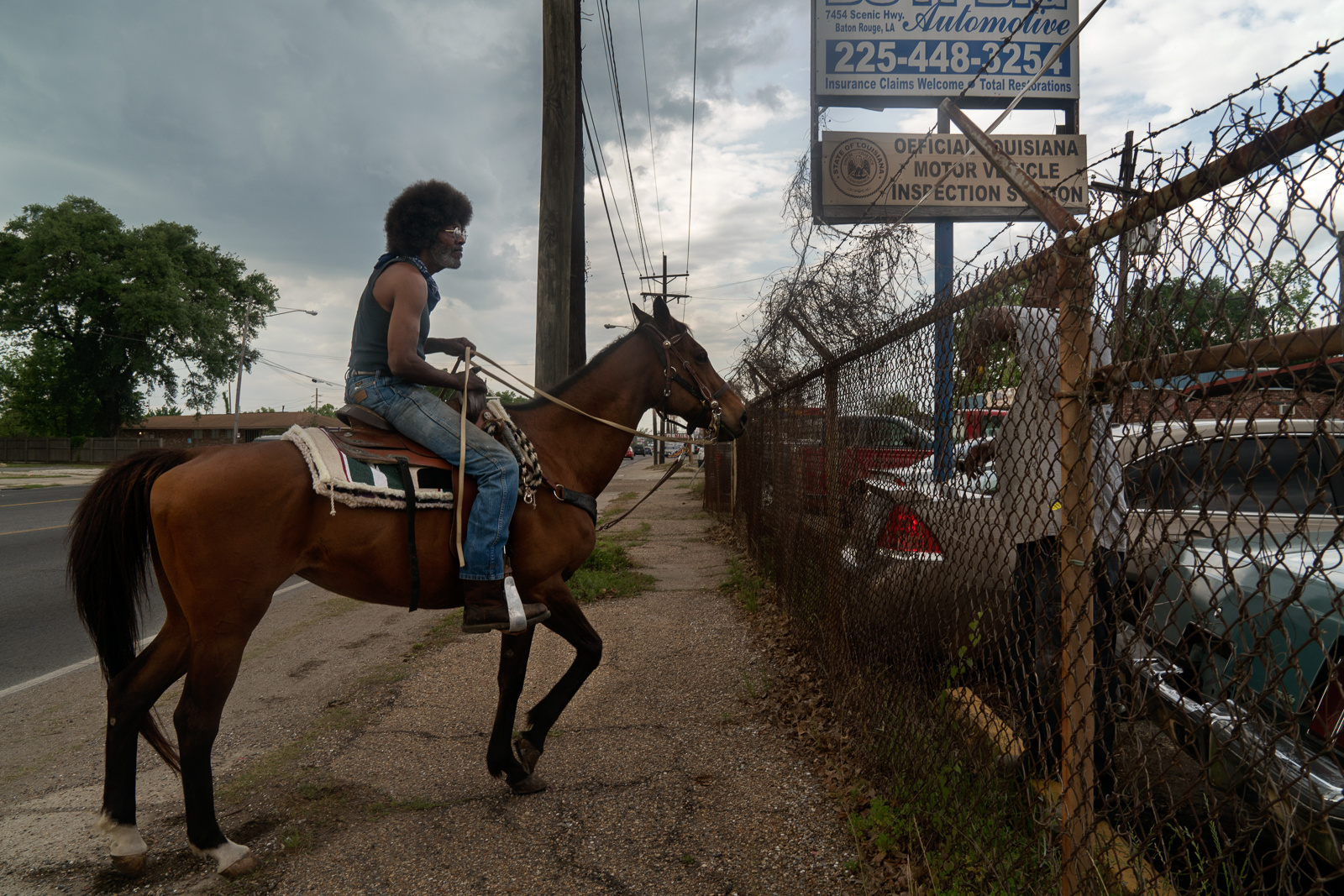
Stacy Kranitz (from top, all untitled): Baton Rouge, Louisiana, 2017;
Port Allen, Louisiana, 2017;
Baton Rouge, Louisiana, 2017;
Baton Rouge, Louisiana, 2017;
Zachary, Louisiana 2016
Romke Your directness is really useful here. You have to get right to the point. In your relationship with the lawyer, just how hard do you pummel him for answers? Where do you draw the line?
Stacy I don’t think I was very careful or thoughtful about how much I pushed at him or belittled his contribution as a lawyer and my contribution as an artist. But I am fond of him and that prevented me from being cruel or insensitive. There were times I had to take responsibility for going too far. I think he understood most of the time that I was working something out for myself and it wasn’t about either of us as people but the frailty of our work and our ability to affect change in other lives through that work.
We had a lot of experiential overlaps and he had a long-term commitment to his own work which was not going to be undone by my naïve ideas. He had spent years working on cases in central Appalachia against the coal industry and so there was a lot of shared knowledge between us about specific capitalist narratives. I think working through what we had done in Appalachia and what we were now doing in Louisiana was cathartic and useful for both of us even if we don’t outright agree on everything.
Stacy I don’t think I was very careful or thoughtful about how much I pushed at him or belittled his contribution as a lawyer and my contribution as an artist. But I am fond of him and that prevented me from being cruel or insensitive. There were times I had to take responsibility for going too far. I think he understood most of the time that I was working something out for myself and it wasn’t about either of us as people but the frailty of our work and our ability to affect change in other lives through that work.
We had a lot of experiential overlaps and he had a long-term commitment to his own work which was not going to be undone by my naïve ideas. He had spent years working on cases in central Appalachia against the coal industry and so there was a lot of shared knowledge between us about specific capitalist narratives. I think working through what we had done in Appalachia and what we were now doing in Louisiana was cathartic and useful for both of us even if we don’t outright agree on everything.
Romke Circling back to something you spoke about earlier, having worked in established media, I know what you're talking about in terms of that depressingly surface-level coverage. There's so many more obstacles in that world than just what they can offer to pay contributors. I once tried to work through an article about Nestlé's exploitation of groundwater in Coachella Valley during the drought through some shady secret deals but of course Nestlé advertises everywhere and nobody in that strata of media wants to risk angering them. It was a moment of clarity for me. Today, the media industry is so dependent on advertising, independent deep-dives like the one you've embarked on are incredibly potent and necessary.
Stacy I remember being scolded by a photo editor at the New Yorker because I referred to the magazine as a brand. For me, it comes back to self-reflexivity. Acknowledging the complicity and limitations of contemporary media is a crucial first step. There are several nonprofit investigative journalism organizations like Pro-publica which seem to be creating new journalistic models.
Stacy I remember being scolded by a photo editor at the New Yorker because I referred to the magazine as a brand. For me, it comes back to self-reflexivity. Acknowledging the complicity and limitations of contemporary media is a crucial first step. There are several nonprofit investigative journalism organizations like Pro-publica which seem to be creating new journalistic models.
Romke In your previous documentary projects you were present in the work as a fictional character: it has in a way become your hallmark. It took me a while to come around to it and to understand the depths of these approaches. Now, I find it truly profound and invigorating: we spoke about that specifically at length in the final feature of Mossless 4. If you appear in this work, will it be Stacy Kranitz in the photos? Or is there another character whose representation you're considering embodying?
Stacy Everytime I appear in the work, I swear I never will appear again because it is simplistic and as an artist I should be capable of finding different ways to talk about my subjective role. I remember one day I imagined creating a super hero character for myself “white savior” or maybe just “white woman” but I don’t put myself into the work as a punchline so inevitably I had to scratch that. I put myself in the work because if I do not it feels dishonest. I’m not yet sure how I will present my subjective relationship to the project. I think there is value in illuminating my struggle to come to terms with the failure of social justice photography but maybe this project is best without a subjective narrative.
Stacy Everytime I appear in the work, I swear I never will appear again because it is simplistic and as an artist I should be capable of finding different ways to talk about my subjective role. I remember one day I imagined creating a super hero character for myself “white savior” or maybe just “white woman” but I don’t put myself into the work as a punchline so inevitably I had to scratch that. I put myself in the work because if I do not it feels dishonest. I’m not yet sure how I will present my subjective relationship to the project. I think there is value in illuminating my struggle to come to terms with the failure of social justice photography but maybe this project is best without a subjective narrative.

Stacy Kranitz, Untitled, Baton Rouge, Louisiana, 2017